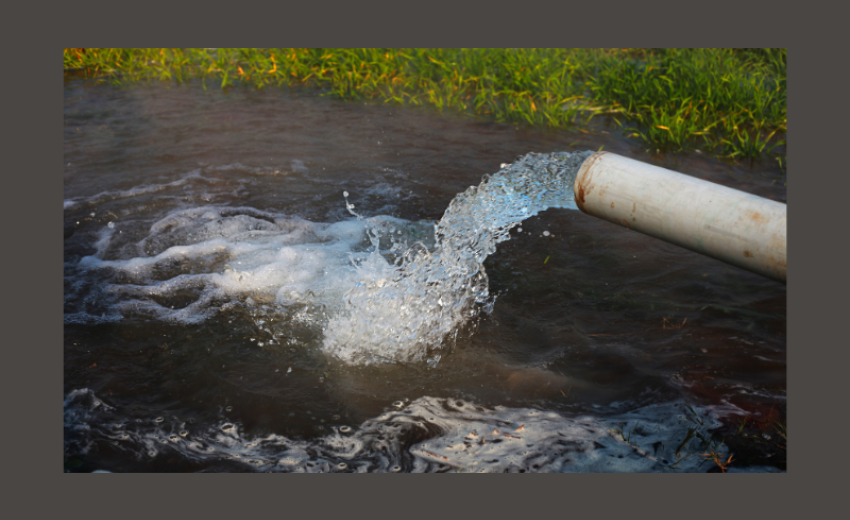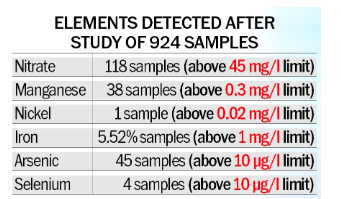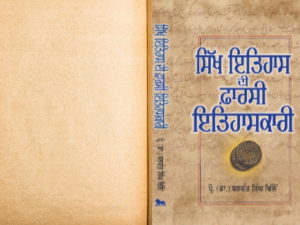“Fighting for Sikh Causes in Indian Parliament” was edited by me in 2021 on the basis of documents supplied by Sardar Tarlochan Singh (Ex-MP, Rajya Sabha). Sardar Vikramjit Singh Sawhney (presently MP Rajya Sabha) funded this project, and book was freely distributed by Arsee Publishers, New Delhi. It got wide publicity on discussion forums before parliamentary elections 2024. It will augur well if Members of Parliament from Punjab start fighting for the “Punjab Causes” collectively, rising above the party interests, as displayed recently in the Indian Parliament.
After retirement, my research interests were focused on “Groundwater Contamination of Punjab due to Uranium and other Heavy Metals”. More than two dozen research papers have been published in International Journals. Punjab suffers from two maladies of extreme nature: (i) Its groundwater is depleted beyond recovery in almost all blocks due to overexploitation, and (ii) It is highly contaminated due to presence of pollutants of all types rendering it unfit for drinking and irrigation. Before summing up results of my investigations, I may recall the role played by Parliamentarians of Punjab.
Uranium poisoning in Punjab first made news in March 2009, when a South African Clinical Metal Toxicologist, Carin Smit [1], visiting Faridkot city in Punjab found surprisingly high levels of uranium in 88% of the blood samples collected from amongst mentally retarded children in the Malwa region of Punjab. This issue was raised in Parliament and fruitful discussion was held to resolve it. As a consequence, Bhabha Atomic Research Centre (BARC) provided liberal grants to GND University Physics Department for carrying out research on groundwater contamination. Tata Memorial Cancer hospital was also involved, and its branch became operational in Sangrur to evaluate cancer risk due to heavy metal contamination. The famous “Cancer Train” to Bikaner is no more needed in Punjab.
My google search revealed that Partap Singh Bajwa (Member, Rajya Sabha) raised a Starred Question No. 39 in Parliament on groundwater contamination in Punjab, which was answered by Uma Bharti, the then Minister of Water Resources, River Development and Ganga Rejuvenation, on 6th Feb. 2017. The details are available from archives of Parliament Library:
*39. SHRI PARTAP SINGH BAJWA
Will the Minister of WATER RESOURCES, RIVER DEVELOPMENT AND GANGA REJUVENATION be pleased to state:
(a) the prescribed World Health Organisation (WHO) limits for chemicals like Aluminium, Arsenic, Lead, Uranium, Mercury and Chromium in groundwater, chemical-wise;
(b) whether any of the districts in Punjab have higher concentration of the aforementioned chemicals in groundwater and if so, the details thereof and the reasons therefor; and
(c) whether any study has been undertaken/completed to gauge the potential health impact of these chemicals in groundwater and if so, the findings thereof?
The gist of Minister’s reply is summed up in a table regarding contaminants in Punjab:
Contaminants in Ground Water in Punjab
Arsenic Mansa, Amritsar, Gurdaspur, Hoshiarpur, Kapurthala, Ropar, Faridkot, Nawashahar, Sangrur, Taran Taran
Lead Amritsar, Bathinda, Ferozepur, Gurdaspur, Muktsar, Ropar
Chromium Amritsar, Bathinda, Gurdaspur, Kapurthala, Mansa, Ropar, Barnala, Sangrur, SAS Nagar, Taran Taran
Uranium Amritsar, Bathinda, Barnala, Faridkot, Fatehgarh Sahib, Ferozepur, Gurdaspur, Hoshiarpur, Kapurthala, Jalandhar, Ludhiana, Mansa, Moga, SBS Nagar, Patiala, Ropar, Sangrur, Taran Taran
The reply was based on groundwater data collected by Department of Water Supply and Sanitation (DWSS) of Punjab Government, SAS Nagar (Mohali) under the aegis of World Bank Project, and generated by Regional Advanced Water Testing Laboratory (RAWTL) based in Mohali. Our study is also based on groundwater data supplied by DWSS.
On July 26, The Tribune published a report “Dangerous amount of toxicity in Punjab groundwater showing presence of harmful uranium, lead beyond permissible limits”. Congress MP, Charanjit Singh Channi, raised this issue in Parliament and Minister of State for Jal Shakti, Raj Bhushan Chaudhary, replied using data provided by Central Ground Water Board (CGWB). The summary of Minister’s reply is as follows:
MINISTER REPLIES TO EX-CM CHANNI’S POSER
According to the minister, groundwater samples showed dangerous concentrations of contaminants such as nitrate, iron, arsenic, selenium, chromium, manganese, nickel, cadmium, lead and uranium, all exceeding permissible limits set by the Bureau of Indian Standards. Heavy metals and anthropogenic pollutants beyond the permissible limits for human consumption have been reported in isolated pockets in groundwater of Punjab.
Overuse of fertilisers, pesticides to blame?
Experts attribute the contamination largely to the overuse of fertilizers and pesticides. Punjab leads the country in fertilizer consumption, with an annual usage of 375.63 kg of urea and 91.49 kg of diammonium phosphate per hectare.
Health problems
High levels of magnesium can lead to depression and nerve problems, while excessive sodium intake can cause nausea, muscle twitching, and in severe cases, fatality.
The Minister’s reply is based on CGWB data collected randomly from 924 locations. DWSS data covers the entire Punjab with more than 8200 samples analyzed at RAWTL, Mohali. My research is based on DWSS data collected from all districts; hence it is more comprehensive and represents a far better scenario of groundwater contamination in Punjab. A summary of our findings is listed as under:
Our group in GND University was the first to report high Uranium content in groundwater and correlate it with cancer occurrence in the Malwa belt of Punjab. My recent investigations based on DWSS data reveal a different scenario in Punjab. Majha belt is highly contaminated with Arsenic, Doaba belt with Selenium, and Malwa belt with Uranium contamination in groundwater. Our Current Science paper (25 June 2024) reports carcinogenic and non-carcinogenic health hazards for the population of Majha belt of Punjab: “The predicted values for cancer induction in children and adults of Amritsar district are 500 and 360 per million respectively. Mitigation of arsenic in groundwater is an urgent need in the Majha belt of Punjab”.
Other important conclusions of our study using DWSS data of RAWTL are as follows:
- Patiala district is a “Hot Spot” due to high Fluoride, Nitrate, Sulphate, Nickel, and Cadmium contamination in groundwater, in addition to Uranium.
- Amritsar district is a “Hot Spot” of Arsenic contamination in Punjab. More than 50% villages with high Arsenic in Punjab are found in this district.
- Hoshiarpur is a “Hot Spot” of Chromium contamination of groundwater. More than 80% villages with high chromium are found in this district.
- Mercury contamination of groundwater is rampant in Ferozepur district.
- Lead contamination is wide spread in Punjab with highest number of villages found in Jallandhar and Gurdaspur districts.
- Uranium contamination is rampant in the 10 districts of Malwa belt.
- Mitigation measures are in progress by DWSS under the World Bank Project.
- Heavy metal contamination in groundwater is attributed to intensive use of fertilisers and weedicides in addition to geogenic sources which come into play due to over-exploitation of groundwater resources in Punjab.
- A simple solution to the problem is also suggested: (i) promote Organic farming in Punjab, (ii) stop free supply of power to Tubewells, and (iii) adopt a cropping pattern which breaks the wheat-paddy cycle.
- Punjab is on the brink of a looming disaster if mitigation measures are not implemented in near future.
Clock is ticking fast for Punjab to act, otherwise the backbone of Punjab, its peasantry, will be destroyed! I am reminded of a couplet of Oliver Goldsmith in his celebrated poem:
The Deserted Village
Ill fares the land, to hastening ills a prey,
Where wealth accumulates, and men decay:
Princes and lords may flourish, or may fade—
A breath can make them, as a breath has made:
But a bold peasantry, their country’s pride,
When once destroyed, can never be supplied.
End Notes:
1. Vikramjit Singh Sawhney, MP Rajya Sabha, is raising Punjab issues in Parliament boldly. He asked about solution of declining groundwater level in Punjab. The Minister Jal Shakti, CR Patil, informed him that 18 districts are in red zone due to overexploitation of groundwater in Punjab. Sawhney wanted Punjab to be included under Atul Bhujal Yojana, a World Bank Project. Haryana and six more states are beneficiaries under this scheme. The Minister informed him that Punjab has not fulfilled the criteria.
2. Under crop diversification, the Central Govt. sanctioned Rs. 293 Crore to Punjab on June 10. The scheme failed to be implemented during this paddy season due to red tape of bureaucracy in Punjab.
3. Punjab also suffers due to tensions between the Centre and State governments.







